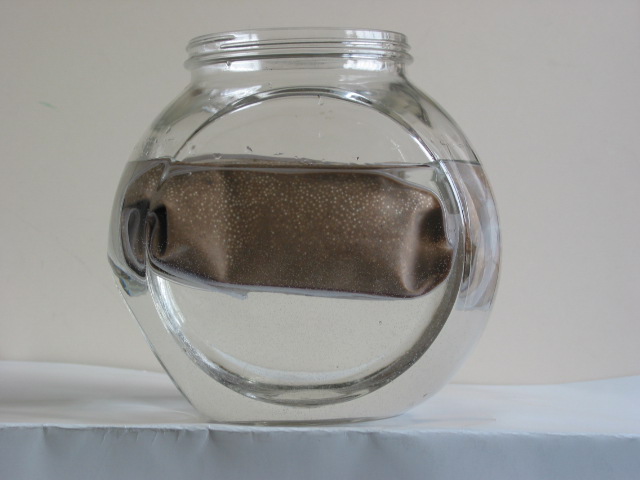|
|
|||||||||||||||||||||||||||||||
|
|
|||||||||||||||||||||||||||||||
|
Potential civil engineering applications for SALi: The Three Gorges Dam
SALi Technology could be used to solve difficult civil engineering problems, for example, mitigating the geological hazards associated with the Three Gorges Dam The Problem, as outlined in New Scientist magazine, page 11, 2nd March 2002. "The world's biggest hydroelectric scheme, being built on the Yangtze River in southern China, could spark a geological disaster. .... Western hydrologists fear that landslips falling into the reservoir could create waves that could damage the dam. 'The consequences of failure at the dam would rank as one of the world's worst man-made disasters,' says Philip Williams, a California hydrologist. A SALi based solution: The diagram below illustrates the principle behind our proposed solution. Surge waves travelling towards the dam wall would compress the SALi filled bags providing two forms of protection: (1) The bags would absorb wave energy reducing the stresses on the dam wall, (2) The space behind the dam, created by compressing the bags, would provide a "hole" for the wave peaks to fall into, reducing the volume of water that sloshes over the dam wall.
The SALi bag which is just floating in this jar of water is filled with expanded polystyrene beads and a matrix fluid consisting of water mixed with sand, to counter the buoyancy of the beads and Bentonite clay, to provide viscous damping. SALi based protective system could be retro-fitted to existing reservoirs, without requiring modifications to the existing structure. The level of protection could be gradually increased over time, at modest cost, by adding SALi filled bags on an incremental basis. Settlements close to the water line of large reservoirs could be protected by SALi based pontoons. These would double up as harbours or embankments for public gatherings. At times of the year, when the risk of landslips is low, the pontoons could be strung out, to provide pontoon bridges, linking settlements on opposite banks of the reservoir. In order to allow the intermittent passage of marine traffic, the central sections of the pontoon bridges could include air bladders, which are deflated, so that the section temporarily sinks below the depth of the ships keels. If you are an engineer with a professional interest in dam protection please contact us.
|
|
||||||||||||||||||||||||||||||
Copyright Cheshire Innovation 2002-13 | All Rights Reserved | Site Design By Richard Klee
| Contact Us
|
|||||||||||||||||||||||||||||||
 NEUTRAL
BUOYANCY SALI BAGS
NEUTRAL
BUOYANCY SALI BAGS